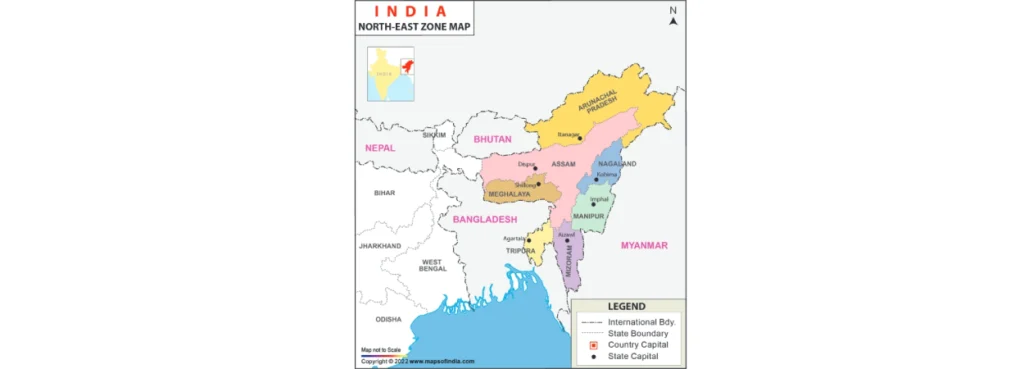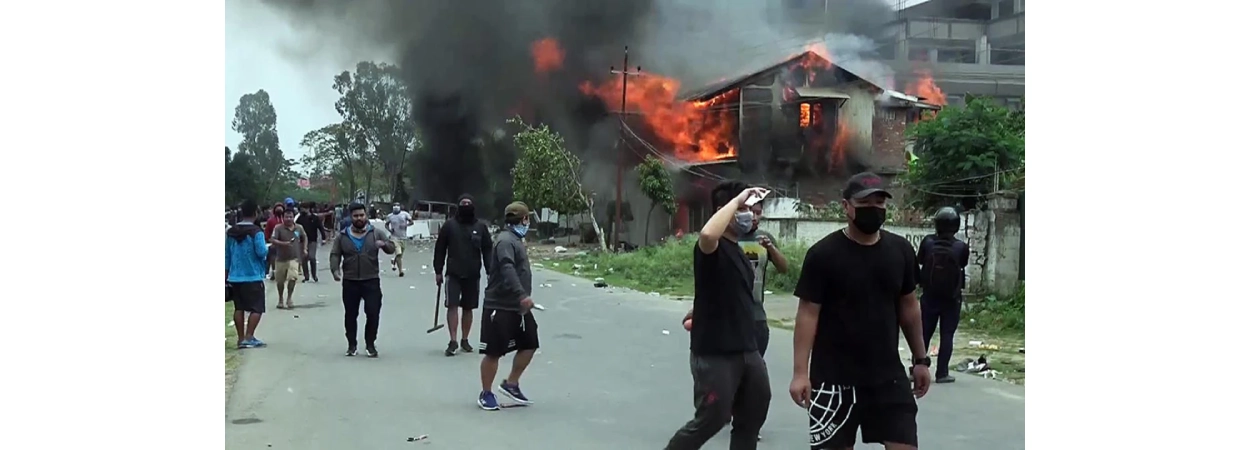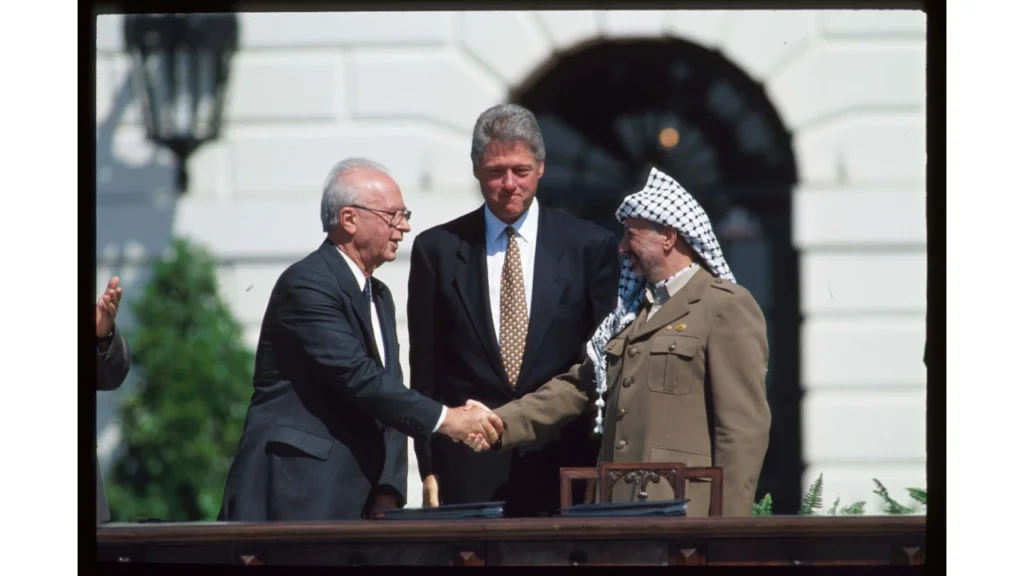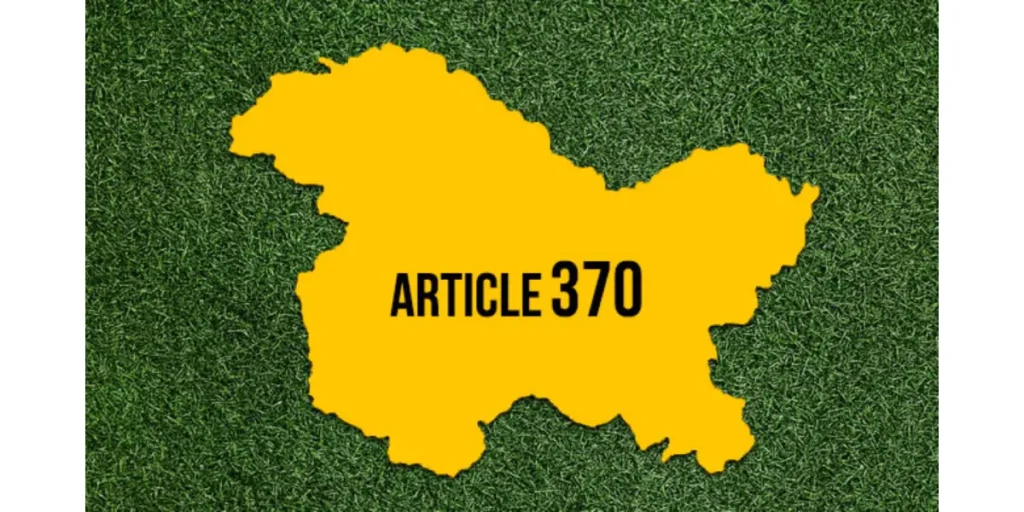Table of Contents
Violent clashes broke out between Meitis and Kukis in Manipur’s Churchandpur on May 3, 2023, during the ‘Tribal Solidarity March’ called by the All Tribal Student’s Union of Manipur (ATSUM). It has now engulfed the entire state. The solidarity march was called to protest the High Court order directing the state government to recommend to the central government the inclusion of Meites in the ST category.

About Manipur:
Manipur is a beautiful state surrounded by hill ranges and was rightly called the ‘Jewel of India’ by Pandit Jawaharlal Nehru. Known as ‘Kangaleipak’ or ‘Sanalipak’ (Golden Land) among its inhabitants, it has an area of 22,327 km² and is bounded by Nagaland to the north, Assam to the west, Mizoram to the southwest and Myanmar to the East and South-East. The valley is a plateau; Its height is about 2,600 feet above sea level. The hills and mountains of Manipur rise from the Himalayas, which form the northern border of India. The population of the state is 27.22 lakh (Census 2011).
Also Read : https://topicsxpress.com/article-370-critical-analysis-of-its-evolution-and-removal/
Manipur’s Demographics :
It is one of the eight North Eastern states (called ‘Ashta Lakshmi’ by PM Modi). Its capital Imphal is a valley which covers about 10% of the state territory and includes approx. 60% of the population and the rest 90% of the area are hilly. The people living in the valley are Meitis (60% of the population, of whom 40% are Hindu and 15% are Muslim called Pangal), and in the mountains are Kuki (24% of the population) and Naga (16% of the population). Meites are the dominant community in 40 of the 60 assembly seats.
Growth of Ethnic Identities :
- Meitei: Before the arrival of Vaishnavism from Bengal, the people followed the original tribal culture. The Vaishnava movement of Bengal suddenly changes the socio-economic formation in the valley from tribalism to ethnicity. The threat posed by the Naga movement, poor governance, neglect on the part of the central government and identity crisis have been driving factors in the revival of Meitei nationalism.
- Naga: Haipo Jadonang and Rani Gaidinliu led the Naga identity mainly in Manipur, who started the anti-British movement in 1931. At that time the Naga movement of Manipur was separate from Nagaland. Naga nationalism in Manipur became vocal and violent following stiff resistance from the Meiteis to the Naga group’s demand to merge the Naga-inhabited hills of Manipur into ‘Greater Nagalim’.
- Kuki: In 11th century Manipur there are inscriptions suggesting Kuki. After 1845, the Kukis migrated to Manipur on a large scale. Mac Culloh, a British political agent in Manipur, settled them so that they would act as guards on the exposed frontiers. With the strengthening of the NSCN in the hills of Manipur since the 1980s and the demand for Naga integration, the demand for a Kuki homeland led to the formation of the Kuki National Organization (KNO) and its armed wing, the Kuki National Army (KNA), in 1988.
- Pangal: Manipuri Muslims, or Pangals as they are commonly called, came to Manipur from Assam and Bengal in the beginning of the last century and settled in the alluvial plains of Imphal.
The Fault Lines :
- Historical bias: Manipur was ruled by the Meitei kings. British and Meitei kings used cookies to avoid the attack of Nagas. Kuki is considered an outsider by both the Nagas and the Meitei. In its long history, there was not a single instance of communal rioting in the history of Manipur until December 1992, when riots broke out between Nagas and Kukis and continued till 1995.
- Skeptic Political Representation: Meiteis dominate 40 of the state’s 60 assembly seats. The Kukis and Nagas feel marginalized in the decision-making process, which affects their culture and livelihood.
- Non-inclusive development: The state government has focused its development programs and central development initiatives mainly in the valley, leaving the hilly areas demand.
- Property Rights: This is one of the most debated issues. The Meitei can buy land only in the valley (it is 10% of the state area and shelters 60% of its population), not in the hilly areas, as they are reserve forests.
- Ban on opium: Recently the state government banned opium in place of medicinal cannabis in reserve forests and started surveying it. This caused several Kukis to be evicted.
- NRC demand: The Meitei people demand a National Register of Citizens (NRC) on the basis of the recently concluded Assam NRC. The Meiteis consider the Kukis to be outsiders and therefore tenants, not landlords.
Way Forward :
- The Center should act as an honest broker and announce a transparent inquiry into the roots of the violence and fix accountability.
- Civil society leaders, intellectuals from the state and other states should come forward to organize peace talks in all the affected districts.
- The Center should hold tripartite talks with the state government and ethnic groups.
- Sports facilities should be opened up and used as a bonding agent between communities (because all groups love Mary Kom).




